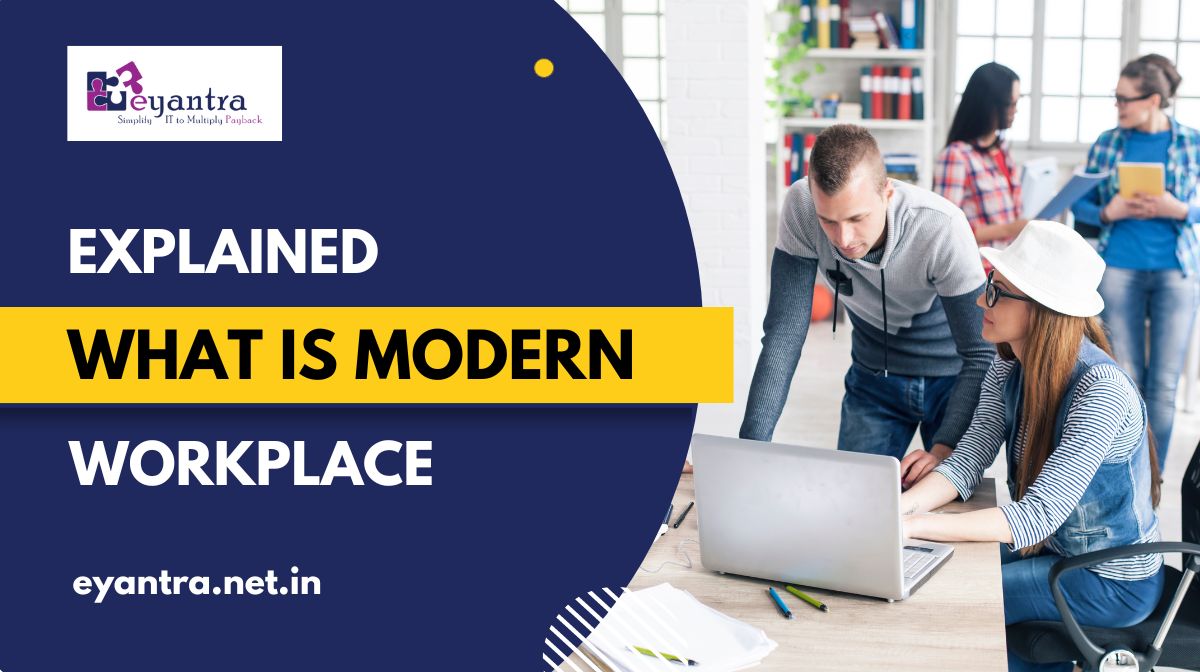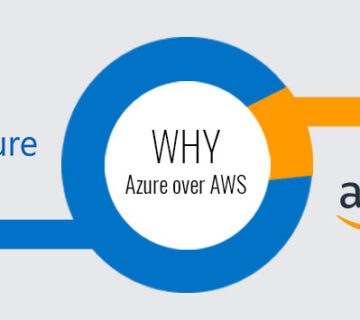Modern Workplace and Microsoft 365
What image comes to mind when you think of a modern workplace? Gaming areas in the office? An abundant kitchen supply? Or do you see a co-working space where a variety of people and businesses work together in one location? Or do cubicles spring to mind? Read along to know what is modern workplace means nowadays.
A high-speed internet only or given that landlines are less widespread than they previously were. The vision of a workplace that came to me might not have even included them, but it was undoubtedly one where everyone had access to the data from anywhere in a safe, secure, and managed way.
Every
business nowadays needs to collaborate with a wide range of people and share
its unique papers. A combination of technological, physical, and psychological
elements that maximize business output and efficiency and achieve employee
satisfaction describes modern workplaces. To meet the demands of organizations
and individuals now and in the future, the specifics of a modern workplace are
evolving with time.
The Morden
Workplace is designed around the idea of activity-based working, which aims to
increase Flexibility, Productivity, and Collaboration while maximizing Return
on Investment.
People can
choose their settings for a variety of activities. People can physically
situate themselves wherever it is most convenient for them to finish their
work, which does not need them to complete all of their work in one location.

An environment that is built on activities changes constantly. Employees are free to select the location or setting that best suits the jobs or activities they need to complete on a particular day. Additionally, it can accommodate various employee working preferences with ease.
Because of this flexibility, workers might not have a personal desk or workstation. They are free to work at any station. They may hold meetings in specific, previously scheduled meeting rooms that are equipped with all the necessary technology for a flawless experience.
They may also make use of collaborative tools like whiteboards during these meetings. They might then relocate to a huddle room where they can work together in a small group without disturbing the others who are silently working at their desks.
The purpose of the activity-based environment is to increase options and productivity while minimizing noise and other issues that arose when businesses first switched to open floor layouts.
Today’s workplace’s entire design is based on a change in organizational culture. For the new normal to work at its best, there needs to be more employee trust. Employers must give employees the freedom to choose how to spend their time at work.
The team’s productivity will be limited and the space – and the workers – won’t perform to their full potential if they are micromanaged or told to use different workspace features only occasionally.
For firms with more traditional work environments and cultures, making this cultural transformation could need considerable effort. To ensure that all of the necessary tools are in place for everything to operate without a hitch, coordination from the top down is required, as well as assistance from the IT team.
To guarantee that all supervisors are not making decisions about employees based on historical norms, it will be necessary for leaders to assist them in modeling the desired behaviors.
Modern Workplace and Microsoft 365
The modern workplace has undergone significant changes and continues to evolve, driven by advancements in technology, shifting demographics, and changes in work culture. Here are some key aspects of the modern workplace:
-
Remote and Hybrid Work: The COVID-19 pandemic accelerated the adoption of remote work, and many organizations have continued to offer remote or hybrid work options. This flexibility allows employees to work from home, coffee shops, or other remote locations, reducing the need for a traditional office space.
-
Technology: Technology plays a central role in the modern workplace. Cloud computing, collaboration tools (e.g., Slack, Microsoft Teams), video conferencing (e.g., Zoom), and project management software have become essential for remote and hybrid work environments. Additionally, the use of artificial intelligence (AI) and automation is becoming more prevalent in various industries.
-
Flexible Schedules: Many organizations now offer flexible work hours, allowing employees to better balance work and personal life. This approach promotes greater work-life balance and can lead to increased job satisfaction.
-
Diversity and Inclusion: Modern workplaces are increasingly focused on creating diverse and inclusive environments. Companies recognize the importance of fostering a diverse workforce and providing equitable opportunities for all employees.
-
Wellness and Mental Health: Employers are placing a greater emphasis on employee well-being, including mental health support. Wellness programs, Employee Assistance Programs (EAPs), and initiatives promoting a healthy work-life balance are common in modern workplaces.
-
Remote Collaboration: With remote work, collaboration has become more reliant on digital tools. Video meetings, file-sharing platforms, and virtual project management tools enable teams to collaborate effectively, regardless of their physical location.
-
Workplace Design: Some organizations are reimagining their physical office spaces. They may opt for flexible layouts that accommodate a combination of in-office and remote work, emphasizing collaboration spaces over traditional cubicles.
-
Digital Security: As remote work and digital collaboration become more prevalent, cybersecurity has become a top priority. Companies invest in robust cybersecurity measures to protect sensitive data and information.
-
Learning and Development: Continuous learning and skill development are essential in the modern workplace. Employers often provide opportunities for employees to upskill or reskill through training programs and online courses.
-
Emphasis on Results: Instead of focusing solely on hours worked, modern workplaces often prioritize results and outcomes. This shift toward results-based performance evaluation allows employees greater autonomy in managing their work.
-
Environmental Sustainability: Many companies are committed to reducing their environmental impact. This includes adopting eco-friendly practices, reducing waste, and implementing sustainable office designs.
-
Remote Onboarding: With remote and hybrid work arrangements, onboarding processes have adapted to include virtual orientations, training, and team introductions.
-
Emphasis on Employee Experience: Companies recognize the importance of creating a positive employee experience. This involves understanding and addressing the needs and preferences of employees to enhance job satisfaction and retention.
-
Communication and Transparency: Effective communication and transparency are crucial in modern workplaces. Regular updates, town hall meetings, and open-door policies help foster a culture of trust and collaboration.
-
Data Analytics: Data-driven decision-making is becoming more common. Companies collect and analyze data on various aspects of the workplace to make informed decisions about resource allocation, employee performance, and more.
The modern workplace is characterized by adaptability and a willingness to embrace change. As technology continues to advance and societal expectations evolve, the workplace will likely undergo further transformations in the years to come.



No comment